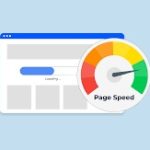The myth persists across boardrooms from Vancouver to Miami: web design exists purely for aesthetics while Search Engine Optimization handles visibility. This dangerous misconception costs businesses millions in lost organic traffic annually. Search engines like Google and Bing evaluate websites through sophisticated algorithms that intertwine design elements with ranking signals, making the relationship between visual appeal and search engine rankings inseparable. When user experience meets strategic SEO strategy, websites transform from digital brochures into powerful lead gen solutions that consistently deliver qualified prospects and measurable sales.
The Foundation: Technical SEO Through Design Architecture
Technical SEO begins with fundamental website architecture decisions that impact how search engines crawl, index, and rank your site. Page speed, mobile-friendly design, and structured navigation directly influence ranking factors that determine visibility on search engines.
Critical Technical Elements:
- Speed Optimization ensuring fast loading times across all devices
- Mobile-friendly responsive design adapting to various screen sizes
- Clean URL structure supporting search engine algorithm requirements
- Structured data markup helping search engines understand content
- Internal linking architecture distributing authority throughout the site
Google Search Console data reveals that page speed significantly impacts bounce rate and user experience metrics. Search engines prioritize websites providing seamless access to information, making design optimization crucial for search traffic generation. Google Analytics confirms that faster-loading pages consistently achieve better ranking positions and higher conversion rates.
Content management system selection affects long-term SEO strategy success. Platforms must support technical SEO requirements while providing flexibility for content optimization and on page optimization efforts. SE Ranking and similar SEO platforms monitor how design changes impact search engine results pages performance.
Modern search algorithm updates increasingly emphasize user experience factors. Google Search algorithms check design parts like clear navigation, visual order, and easy access to information. Search metrics research demonstrates strong correlations between superior design quality and improved organic search performance.
User Experience as a Ranking Signal
User experience directly influences search engine rankings through measurable behavioral signals. Search engines monitor how visitors interact with websites, using metrics like bounce rate, session duration, and click-through rates as ranking factors.
UX Elements Affecting SEO:
- Intuitive navigation reducing bounce rate and improving engagement
- Clear visual hierarchy guiding users to important content
- Mobile-friendly design ensuring optimal experience across devices
- Fast-loading pages maintaining user attention and reducing abandonment
- Accessibility features expanding audience reach and search visibility

Google Analytics reveals that well-designed websites consistently achieve lower bounce rate percentages and longer session durations. These user experience metrics signal content quality and relevance to search engines, influencing ranking decisions across SERPs.
Search intent alignment through design helps visitors quickly find desired information. When page layout matches user intent, engagement metrics improve dramatically. Search Engine Land studies confirm that websites optimizing for user experience see corresponding improvements in organic traffic and keyword rankings.
Trust factors embedded in design influence both user behavior and search engine evaluation. Professional design elements, clear contact information, and transparent brand representation build credibility that search engines recognize and reward through improved search engine results positions.
Content Integration and On-Page Optimization
Effective web design seamlessly integrates content marketing strategies with visual elements to enhance on page optimization without compromising aesthetic appeal. Content placement, headers hierarchy, and internal links structure directly impact search engine rankings.
Content-Design Integration Strategies:
- Headers optimization maintaining visual hierarchy while incorporating target keywords
- Meta descriptions and title tags alignment with design messaging
- Relevant content placement supporting natural keyword phrases integration
- Pillar page design featuring comprehensive content on core topics
- Image search optimization through proper alt text and visual content
Keyword research informs both content creation and design decisions. Google Keyword Planner insights guide page titles, headers, and content structure while maintaining design integrity. Detailed keyword analysis makes sure relevant keywords fit naturally in design.
Content quality and presentation work synergistically to satisfy search queries and user intent. High-quality content requires equally sophisticated design to maximize search traffic potential. Ranking coach analysis shows that superior content presentation dramatically improves search engine results pages performance.
Internal linking strategy benefits from thoughtful design implementation. Good navigation and content structure create natural internal links. They also improve user experience. SISTRIX data confirms that strategic internal linking through design enhances overall site authority and ranking potential.
Link Building Through Design Excellence
Outstanding web design naturally attracts high-quality backlinks and social signals that strengthen off page optimization efforts. External links from reputable sources often cite well-designed websites as examples or resources, creating valuable backlink opportunities.
Design Elements Supporting Link Building:
- Visual content encouraging social media sharing and brand awareness
- Case studies presentation showcasing real businesses success stories
- Resource pages featuring valuable tools and information
- Infographic design facilitating natural link building opportunities
- Professional appearance encouraging unlinked brand mentions citations
Backlink datasets analysis reveals that visually appealing websites consistently earn more high-quality backlinks than poorly designed alternatives. Search engine marketing professionals recognize that design quality indirectly influences off page optimization success through natural link building.
Social signals generated by shareable design elements contribute to overall SEO strategy success. Social media engagement driven by compelling visual design creates brand awareness and indirect ranking benefits that search engines consider in algorithm calculations.

Brand consistency across design elements supports unlinked brand mentions that search engines recognize as authority signals. Professional design reinforces brand credibility, encouraging organic mentions and citations that benefit search engine rankings over time.
Mobile Optimization and Local SEO Integration
Mobile-friendly design has evolved from optional enhancement to critical ranking requirement. Google Search algorithms prioritize mobile-friendly websites, making responsive design essential for search traffic success across all device types.
Mobile SEO Design Elements:
- Responsive layout adapting to various screen sizes and orientations
- Touch-friendly navigation supporting mobile user experience
- Speed Optimization for mobile networks and device capabilities
- Local SEO integration through Google My Business design consistency
- Google Business Profile alignment with website design elements
Local SEO strategies gain a lot from consistent design use. Google My Business profiles should reflect website branding and design elements to reinforce brand recognition and trust. Search marketing campaigns achieve better results when design consistency spans all digital touchpoints.
Google Ads campaigns perform better when landing page design aligns with ad creative and brand messaging. Digital marketing success requires coordinated design across all campaign elements, from search engine results snippets to conversion pages.
Image search optimization through design provides additional traffic opportunities often overlooked by competitors. Proper image optimization, structured file naming, and visual content strategy contribute to overall organic traffic growth through multiple search channels.
Measuring Design Impact on SEO Performance
Google Analytics and Google Search Console provide crucial insights into how design changes affect SEO performance. Reporting tools reveal correlations between design improvements and search engine rankings changes, enabling data-driven optimization decisions.
Key Performance Indicators:
- Organic traffic changes following design updates
- Bounce rate improvements indicating better user experience
- Search volume capture for target keywords and keyword phrases
- Conversion rates from organic search traffic
- Search engine results pages visibility improvements
Digital strategy development requires understanding how design elements impact SEO metrics over time. Client cycle analysis shows design improvements often lead to slow ranking gains. This needs patience and steady optimization.
Pricing plans for design and SEO services should reflect the integrated nature of these disciplines. Agency partnerships succeed when design and optimization strategies align with business goals and audience requirements.
Why LinkLumin Excels in Web Design and SEO
LinkLumin stands out in digital marketing. It knows that great web design and SEO success are closely linked.
Our Integrated Approach:
- SEO strategy development informed by design best practices
- Technical SEO implementation through superior website architecture
- Content marketing integration with visually compelling design elements
- Mobile-friendly responsive design supporting local SEO objectives
- Speed Optimization ensuring optimal user experience across all devices
Proven Results: Our case studies demonstrate how integrated design and SEO strategies deliver superior organic traffic growth for real businesses across diverse industries. Client seats testimonials confirm that our approach generates measurable sales improvements and lead gen solutions that exceed expectations.
LinkLumin offers full digital strategy services. This includes keyword research, ongoing optimization, and reporting. Our team utilizes Low-Competition Keywords identification, comprehensive keyword analysis, and keyword research tool insights to inform both design and content decisions.
Technology and Tools: We leverage advanced SEO platforms including SE Ranking, SISTRIX, and Searchmetrics to monitor performance and identify optimization opportunities. Our analysis capabilities ensure clients receive data-driven recommendations based on actual search engine algorithm changes and ranking factors evolution.

How Web Design Influences SEO Rankings and User Experience
The relationship between web design and SEO rankings extends far beyond surface-level aesthetics to encompass fundamental user experience, technical SEO, and content integration elements. Search engines reward websites that successfully balance visual appeal with functional excellence, creating synergistic effects that drive organic traffic and business growth. Digital marketing success needs understanding how design choices affect search rankings. It also needs focus on user needs and business goals during optimization.
Tags




